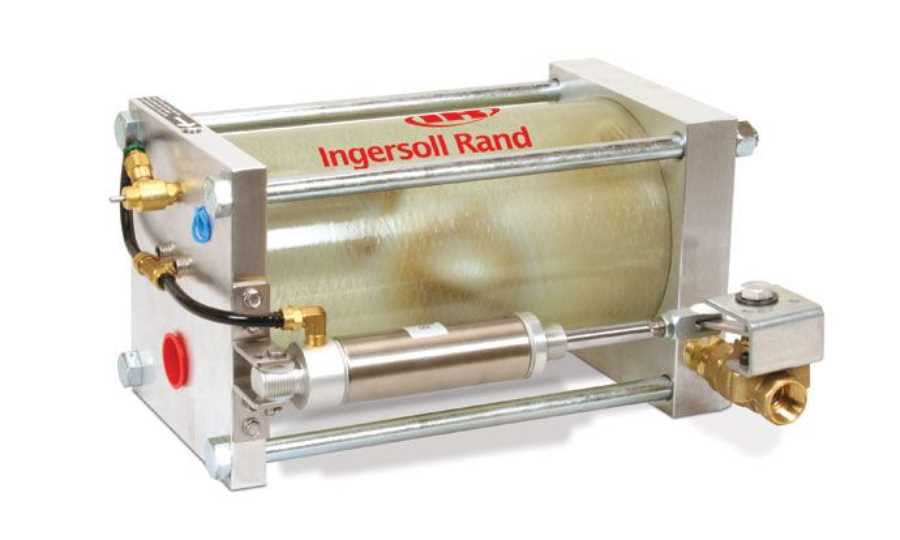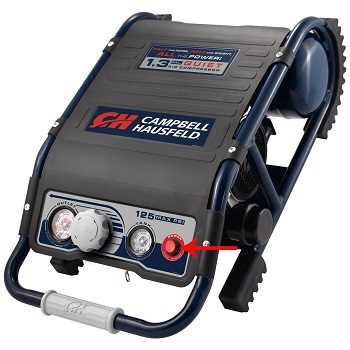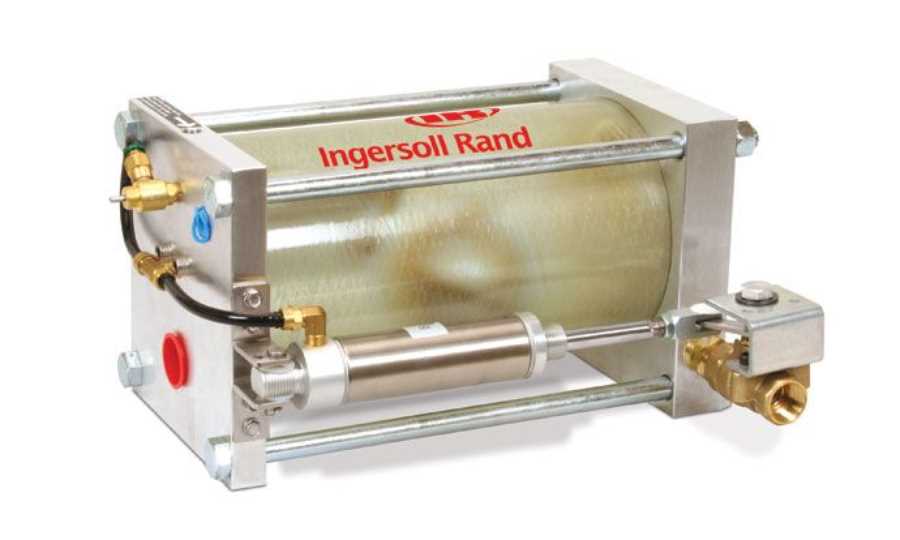How Often Should You Drain Your Air Compressor Tank?

Regular maintenance is essential to prolong the lifespan and maintain the efficiency of your air compressor. One important aspect of this maintenance is draining the air compressor tank. Draining the tank is necessary to remove moisture and condensation that accumulates over time. This moisture can cause rust and corrosion, leading to costly repairs and reduced performance of your air compressor.
So how often should you drain your air compressor tank? The frequency of draining depends on several factors, such as the humidity level in your area, the frequency of use, and the size of your tank. As a general rule of thumb, it is recommended to drain your air compressor tank at least once a month. However, in high-humidity environments or if you use your air compressor frequently, you may need to drain it more frequently, such as every couple of weeks.
Draining the air compressor tank is a simple process that can be done in a few easy steps. First, make sure to turn off the compressor and unplug it from the power source. Then, locate the drain valve on the bottom of the tank. Attach a hose to the valve and place the other end in a suitable container to collect the water. Open the drain valve and let the water drain completely. Once the tank is empty, close the drain valve and remove the hose. It is also a good idea to clean the drain valve and inspect it for any signs of damage or leaks.
Regularly draining your air compressor tank is an important maintenance task that should not be overlooked. By removing moisture and condensation, you can prevent damage to your air compressor and ensure its optimal performance. Make it a part of your regular maintenance routine to extend the life of your air compressor and avoid costly repairs in the future.
When to Drain Your Air Compressor Tank

Draining your air compressor tank regularly is an essential maintenance task to ensure the optimal functioning of your air compressor and to maximize its lifespan. The frequency at which you should drain your air compressor tank depends on several factors, including the amount of use, the environment, and the type of compressor.
1. Compressor Usage: If you use your air compressor frequently or for extended periods, you should drain the tank more frequently. This is because the more you use the compressor, the more condensation and moisture will accumulate in the tank.
2. Environmental Conditions: The humidity level in your workshop or the location where you store your air compressor can affect how often you need to drain the tank. In humid environments, the tank is more likely to collect moisture, so regular draining is necessary to prevent rust and corrosion.
3. Compressor Type: Different types of air compressors have varying tank designs and mechanisms for managing condensation. Some compressors, such as reciprocating compressors, have built-in moisture traps that can automatically remove moisture from the tank. In these cases, you may not need to drain the tank as frequently. However, it is still recommended to inspect the tank and drain any accumulated moisture regularly.
4. Signs of Water Accumulation: It is important to keep an eye out for signs of water accumulation in your air compressor tank. If you notice water droplets or excessive moisture in the tank, it is a clear indication that it needs to be drained. Additionally, if the compressor starts to operate less efficiently or makes unusual sounds, water accumulation may be the cause.
Overall, it is recommended to inspect and drain your air compressor tank at least once a month, or more frequently if you use it heavily or work in a humid environment. By regularly draining the tank, you can prevent moisture-related issues and ensure the longevity and efficiency of your air compressor.
Importance of Regular Draining
Regular draining of your air compressor tank is crucial to maintain the efficiency and longevity of the compressor.
When an air compressor is in use, moisture from the air condenses and collects in the tank. If this moisture is not drained regularly, it can lead to several problems. Firstly, the collected moisture can mix with oil and other contaminants, forming a corrosive mixture that can damage the tank and other components of the compressor. Regular draining helps to prevent this moisture from accumulating and causing corrosion.
Additionally, regular draining helps to maintain the quality of the compressed air. Moisture in the tank can lead to water vapor getting into the compressed air, which can affect the performance of air-powered tools and equipment. Water in the compressed air can cause rusting, clogs, and malfunctions in the tools and equipment. Draining the tank regularly helps to remove this moisture and ensure that the compressed air remains clean and dry.
Regular draining also helps to prevent pressure loss in the air compressor. The presence of moisture in the tank can cause the pressure relief valve to open more frequently, leading to loss of air pressure. This can affect the efficiency and performance of the air compressor, resulting in longer running times and increased energy consumption. Drainage of the tank reduces the moisture content, allowing the air compressor to maintain optimal pressure levels.
In summary, regular draining of the air compressor tank is essential to prevent corrosion, maintain the quality of the compressed air, and prevent pressure loss. By incorporating this simple maintenance task into your routine, you can ensure the longevity and efficient performance of your air compressor.
Factors to Consider

1. Usage frequency
The frequency of use is an important factor to consider when determining how often you should drain your air compressor tank. If you use your compressor on a daily basis or for long periods of time, it is recommended to drain the tank at least once a day or every few hours of use. This will help prevent moisture buildup and ensure optimal performance.
2. Environment
The environment in which your air compressor is used can also impact how often you need to drain the tank. If you work in a humid environment or an area with high moisture levels, it is advisable to drain the tank more frequently. Moisture can accumulate faster in these environments, leading to potential corrosion and damage to the tank.
3. Tank size
The size of your air compressor tank will also play a role in how often you should drain it. Larger tanks have a higher storage capacity for compressed air and can hold more moisture. As a result, larger tanks may require more frequent draining to prevent excessive moisture buildup and potential damage.
4. Compressed air usage
The amount of compressed air you use during each session can impact how often you need to drain the tank. If you consistently use a large volume of compressed air, more moisture is likely to accumulate in the tank. In this case, it is important to drain the tank more frequently to prevent moisture from causing corrosion or affecting the quality of the compressed air.
5. Manufacturer recommendations
Finally, it is always a good idea to consult the manufacturer’s recommendations for your specific air compressor model. They may provide guidelines on how often to drain the tank based on the design and specifications of the compressor. Following these recommendations can help ensure the longevity and optimal performance of your air compressor.
Recommended Drain Frequency
Routine Maintenance
Regular drainage of your air compressor tank is essential for optimal performance and longevity of the equipment. The recommended drain frequency depends on the usage and operating conditions, but in general, it is advised to drain the tank at least once a month.
For light usage: If you use the air compressor occasionally or for light tasks, such as inflating tires or powering small tools, then draining the tank once a month should be sufficient to prevent moisture buildup.
For moderate usage: If you use the air compressor more frequently or for moderate tasks, such as running air-powered tools or equipment, then it is recommended to drain the tank every two weeks. This will help remove any moisture or condensation that may have accumulated during usage.
For heavy usage: If you use the air compressor extensively or for heavy-duty applications, such as powering industrial machinery or operating large tools, then draining the tank on a weekly basis is highly recommended. This will ensure that the tank is free from moisture and prevent any potential damage or corrosion caused by prolonged exposure to moisture.
Additional Factors
Besides the frequency of usage, other factors can also affect the recommended drain frequency.
- Climate and humidity: In humid climates or during certain seasons, the air compressor tank may accumulate moisture more quickly. In such cases, it may be necessary to increase the drain frequency to prevent excessive moisture buildup.
- Type of compressor: Different types of air compressors may produce varying amounts of moisture. Oil-lubricated compressors, for example, tend to generate more moisture and may require more frequent draining compared to oil-free compressors.
- Operating conditions: If the air compressor is used in conditions where water vapor is present, such as in a painting booth or in a humid environment, then it is important to increase the drain frequency to prevent moisture from contaminating the air supply and affecting the performance of the equipment.
By following the recommended drain frequency and considering these additional factors, you can ensure that your air compressor tank remains efficient, reliable, and free from moisture-related issues.
Signs of Excessive Moisture
Excessive moisture in an air compressor tank can lead to a range of problems, including decreased performance, equipment damage, and increased maintenance needs. It is important to be able to recognize the signs of excessive moisture in order to take the necessary steps to prevent further issues.
1. Water accumulation in the tank
One of the most obvious signs of excessive moisture is the presence of water accumulation in the air compressor tank. This can be seen through a transparent water drain valve or by opening the tank drain valve. If there is a significant amount of water present, it is a clear indication that the tank needs to be drained.
2. Rust or corrosion
Excessive moisture can lead to the formation of rust or corrosion on the inside of the tank. This can be observed as reddish-brown patches or flakes. Rust and corrosion can weaken the tank and cause it to develop leaks over time. Regularly inspecting the tank for signs of rust or corrosion is essential for maintaining the longevity of the air compressor.
3. Decreased air pressure
If you notice a decrease in the air pressure output from your air compressor, it could be an indication of excessive moisture. Excessive moisture can lead to clogged filters, valves, and other components, reducing the efficiency and performance of the air compressor. Regularly draining the tank can help to prevent this issue and ensure optimal air pressure.
4. Water in the compressed air lines
In addition to water accumulation in the tank, excessive moisture can also result in water in the compressed air lines. This can be seen through visible water droplets or moisture in the air tools or equipment that are connected to the air compressor. This can lead to issues such as corrosion, clogged filters, and malfunctioning equipment. Regularly draining the tank will help to prevent the presence of water in the compressed air lines.
Overall, recognizing the signs of excessive moisture in an air compressor tank is crucial for maintaining its performance and preventing potential damage. Regularly draining the tank and implementing proper moisture management techniques will help to ensure the longevity and efficiency of the air compressor.
How to Drain Your Air Compressor Tank
Step 1: Safety First
Before you start draining your air compressor tank, it’s important to prioritize safety. Make sure that the compressor is turned off and unplugged. Wear appropriate protective gear, such as gloves and safety glasses, to protect yourself from any potential hazards.
Step 2: Locate the Drain Valve
The next step is to locate the drain valve on your air compressor tank. This valve is typically located at the bottom of the tank. It may be a ball valve or a simple drain plug.
Step 3: Prepare a Container
Place a container or a bucket below the drain valve to collect the water and any other accumulated moisture from the tank. This will help prevent any mess or damage to your surroundings.
Step 4: Open the Drain Valve
With the container in place, carefully open the drain valve. This will allow the water and moisture to flow out of the tank. It’s important to open the valve slowly to ensure a controlled release of the pressure and avoid any sudden bursts or accidents.
Step 5: Fully Drain the Tank

Allow the tank to fully drain until no more water or moisture is coming out. This may take some time depending on the size of your tank and the amount of moisture accumulated. Be patient and let gravity do its work.
Step 6: Close the Drain Valve
Once the tank is fully drained, close the drain valve tightly to prevent any air leaks or further moisture accumulation. Make sure it is fully sealed to avoid any potential damage to your compressor.
Step 7: Regular Maintenance
Remember that draining your air compressor tank should be part of your regular maintenance routine. Depending on the usage and humidity levels in your area, it’s recommended to drain the tank at least once a month or more frequently if necessary. This will help prolong the life of your compressor and maintain its efficiency.
By following these steps, you can effectively drain your air compressor tank and ensure its optimal performance. Remember to always prioritize safety and perform regular maintenance to keep your compressor in top shape.
Potential Dangers of Not Draining
Regularly draining your air compressor tank is an important maintenance task that should not be overlooked. Failing to do so can lead to several potential dangers and complications.
Increased Risk of Corrosion
One of the biggest dangers of not draining your air compressor tank is the increased risk of corrosion. Over time, water and moisture can accumulate in the tank, creating the perfect breeding ground for rust and corrosion. This can weaken the tank and eventually lead to leaks or even tank failure. Regularly draining the tank helps keep moisture levels low and reduces the risk of corrosion.
Reduced Air Quality
When water and moisture accumulate in the tank, they can mix with the compressed air and affect the quality of the air being produced. This can lead to contamination and affect the performance of tools or equipment that rely on the compressed air. Regularly draining the tank helps ensure that the air being produced is clean and free from any unwanted contaminants.
Decreased Efficiency
If the tank is not drained regularly, the accumulated moisture can affect the overall efficiency of the air compressor. The presence of moisture can cause additional strain on the compressor, leading to increased energy consumption and decreased performance. Regularly draining the tank helps maintain the efficiency of the air compressor and prolong its lifespan.
Potential Safety Hazards
Not draining the air compressor tank can also pose potential safety hazards. The presence of moisture in the tank can cause pressure fluctuations and unexpected releases of air pressure, which can be dangerous. Additionally, if the tank becomes weakened due to corrosion, it may not be able to withstand the pressure and could result in a tank failure or explosion. Regularly draining the tank helps mitigate these safety hazards and ensures safe operation of the air compressor.
Overall, it is crucial to regularly drain your air compressor tank to avoid potential dangers such as increased corrosion, reduced air quality, decreased efficiency, and safety hazards. It is recommended to follow the manufacturer’s guidelines on how often to drain the tank to maintain optimal performance and safety.
Maintenance Tips for Extended Lifespan

1. Regularly clean the air compressor

One of the most important maintenance tips for extending the lifespan of your air compressor is to regularly clean it. Dust, dirt, and debris can accumulate in the compressor, affecting its performance and efficiency. Use a damp cloth or compressed air to clean the exterior and interior components of the compressor. Make sure to remove any debris or obstructions from the air intake vents as well.
2. Check and replace filters regularly
Filters are crucial for maintaining the quality of compressed air and protecting the compressor from contaminants. Check the filters regularly and clean or replace them as necessary. Dirty filters can restrict airflow and put unnecessary strain on the compressor, reducing its lifespan. Following the manufacturer’s recommendations for filter maintenance will help ensure optimal performance.
3. Drain the compressor tank regularly
Draining the compressor tank regularly is essential for removing accumulated moisture. Moisture can condense inside the tank, leading to corrosion and reducing the efficiency of the compressor. Follow the manufacturer’s instructions to properly drain the tank and dispose of the collected moisture. Doing this regularly will prevent damage to the tank and prolong the lifespan of the compressor.
4. Inspect and tighten connections
Over time, vibrations and usage can loosen the connections in your air compressor system. Regularly inspect the connections and fittings to ensure they are tight and secure. Loose connections can lead to leaks, reducing the efficiency of the compressor and potentially causing damage. Use a wrench or appropriate tools to tighten any loose connections.
5. Schedule professional maintenance
While regular maintenance tasks can be performed by the compressor owner, it is also important to schedule professional maintenance at least once a year. Professional technicians have the expertise to thoroughly inspect and service the compressor, identifying any potential issues and ensuring it is in optimal condition. This regular professional maintenance will help extend the lifespan of the compressor and prevent costly repairs.
By following these maintenance tips, you can significantly extend the lifespan of your air compressor. Regular cleaning, filter replacement, tank draining, connection inspection, and professional maintenance will keep your compressor running efficiently and effectively for years to come.
FAQ:
Why is it important to drain an air compressor tank regularly?
It is important to drain an air compressor tank regularly because the moisture that accumulates in the tank can cause corrosion and damage to the tank and other components.
How often should I drain my air compressor tank?
The frequency of draining your air compressor tank depends on the usage and conditions. In general, it is recommended to drain the tank after each use or at least once a month to prevent moisture buildup.
What is the process of draining an air compressor tank?
The process of draining an air compressor tank involves shutting off the compressor, releasing any pressure in the tank, locating the drain valve, attaching a hose or container to the valve, then opening the valve to release the accumulated moisture.
Can I use an automatic drain valve for my air compressor tank?
Yes, using an automatic drain valve for your air compressor tank can make the draining process more convenient and efficient. These valves are designed to automatically release moisture at regular intervals, reducing the need for manual draining.
Video:











